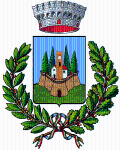Descrizione
L’edificio fu fondato da Bindo di Falcone, che acquistò dei terreni nella zona di Pontignano con lo scopo di donarli ad un certosino di Aquitania, frate Amerigo, per fabbricare un monastero da intitolare a San Pietro. La costruzione venne autorizzata nel 1343 e si protrasse almeno fino alla metà del XV secolo. Nel 1385 fu fortificata dalla Repubblica di Siena a fini di difesa militare ma anche per l’isolamento dei monaci. Il nucleo originale del complesso ruota attorno alla chiesa trecentesca. Il convento conservò per anni la reliquia dell’anulare di Santa Caterina, poi scomparso e oggi custodito a Calci.
Dopo la sua edificazione, si registrano numerosi ingrandimenti della certosa fino all’anno 1784, quando il complesso venne ceduto ai camaldolesi di Monte Celso.
Nel 1810, dopo la soppressione napoleonica, la certosa venne alienata a privati mentre la chiesa trasformata nella parrocchia di San Martino a Cellole.
Nel 1946 la Certosa fu acquistata da Mario Bracci, già ministro, rettore e giudice costituzionale;alla sua morte, avvenuta nel 1959, l’ex-certosa entra fra i possedimenti dell’Università di Siena, che la utilizza come Collegio Universitario intitolato al suo nome . Il complesso, di pianta rettangolare, si sviluppa intorno a quattro chiostri di cui i maggiori, denominati “delle obbedienze” e “della clausura”, sono di costruzione cinquecentesca, mentre gli altri due, detti “dei monaci” e “dei conversi”, rivelano un aspetto ancora quattrocentesco.
Adiacenti a quest’ultimi si ergono le due chiese, di cui la maggiore presenta ancora il filaretto trecentesco con rosoni e monofore sulla parte superiore. Divisa in tre campate fu, come altre parti della certosa, completamente ristrutturata a partire dal 1569 a causa dei danni subiti nel corso della Guerra di Siena (1552-1559). Durante i lavori di restauro vengono realizzati l’altare maggiore in legno, le decorazioni in marmi del presbiterio, il coro, la torre campanaria ( 1588) e gli affreschi della navata, dipinti dal fiorentino Bernardo Poccetti.
Il più antico patrimonio artistico e culturale della certosa andò sicuramente disperso durante il terribile assedio che gli ispanico-fiorentini posero attorno a Siena nel 1555, ma tuttora si conservano all’interno della Certosa importanti opere di artisti senesi di fine Cinquecento, fra cui un Compianto su Cristo morto di Cristoforo Rustici e una Crocifissione di Francesco Vanni. Oggi ospita un centro congressi e la residenza universitaria.
English version:
The structure was founded by Bindo di Falcone, who acquired land in the Pontignano area with the intention of donating it to a Carthusian monk from Aquitania, Friar Amerigo, to build a monastery dedicated to St. Peter. Construction was authorized in 1343 and continued at least until the middle of the 15th century. In 1385 it was fortified by the Republic of Siena, for military defensive purposes, but also to isolate the monks. The original nucleus of the complex revolves around the 14th-century church. For years, the monastery conserved the reliquary of Saint Catherine’s ring finger, which disappeared for a period of time and is now kept in Calci.
After its original construction, the Certosa was enlarged several times before 1784, when the complex was ceded to the Camaldolese monks of Monte Celso.
In 1810, after the Napoleonic suppression, the Certosa was ceded to private owners, and the church was transformed into the parish church of San Martino a Cellole.
In 1946 the Certosa was acquired by Mario Bracci, an ex-government minister, university chancellor and constitutional judge; upon his death in 1959, the ex-certosa became the property of the University of Siena, which used it as a University college residence named for Bracci. The rectangular complex revolves around four cloisters, the largest two of which, called the cloisters “of obedience” and “of seclusion,” date to the 16th century, while the other two, the “monks’ cloister” and the “lay brothers’ cloister,” have an earlier, 15th-century appearance.
Adjacent to the latter two cloisters are two churches, the larger of which still has 14th-century filaretto masonry with rose windows and single-lancet windows in the upper section. Divided into three aisles, it, like other parts of the Certosa, was completely renovated beginning in 1569 due to damage inflicted during the War of Siena (1552-1559). During that renovation, elements restored included the wooden main altar, the marble decorations of the presbytery, the choir, the bell tower (1588) and the frescoes in the nave, painted by the Florentine Bernardo Poccetti.
The oldest artistic and cultural assets of the Certosa were certainly lost during the terrible 1555 siege of Siena by Spanish-Florentine forces, but the complex still conserves important works by late-16th-century Sienese artists, including a Lamentation over the dead Christ by Cristoforo Rustici and a Crucifixion by Francesco Vanni. Today the complex hosts a conference center and a university residence.
Modalità d'accesso
sempre aperto
Indirizzo
Punti di contatto
Ultimo aggiornamento: 4 marzo 2024, 12:31

